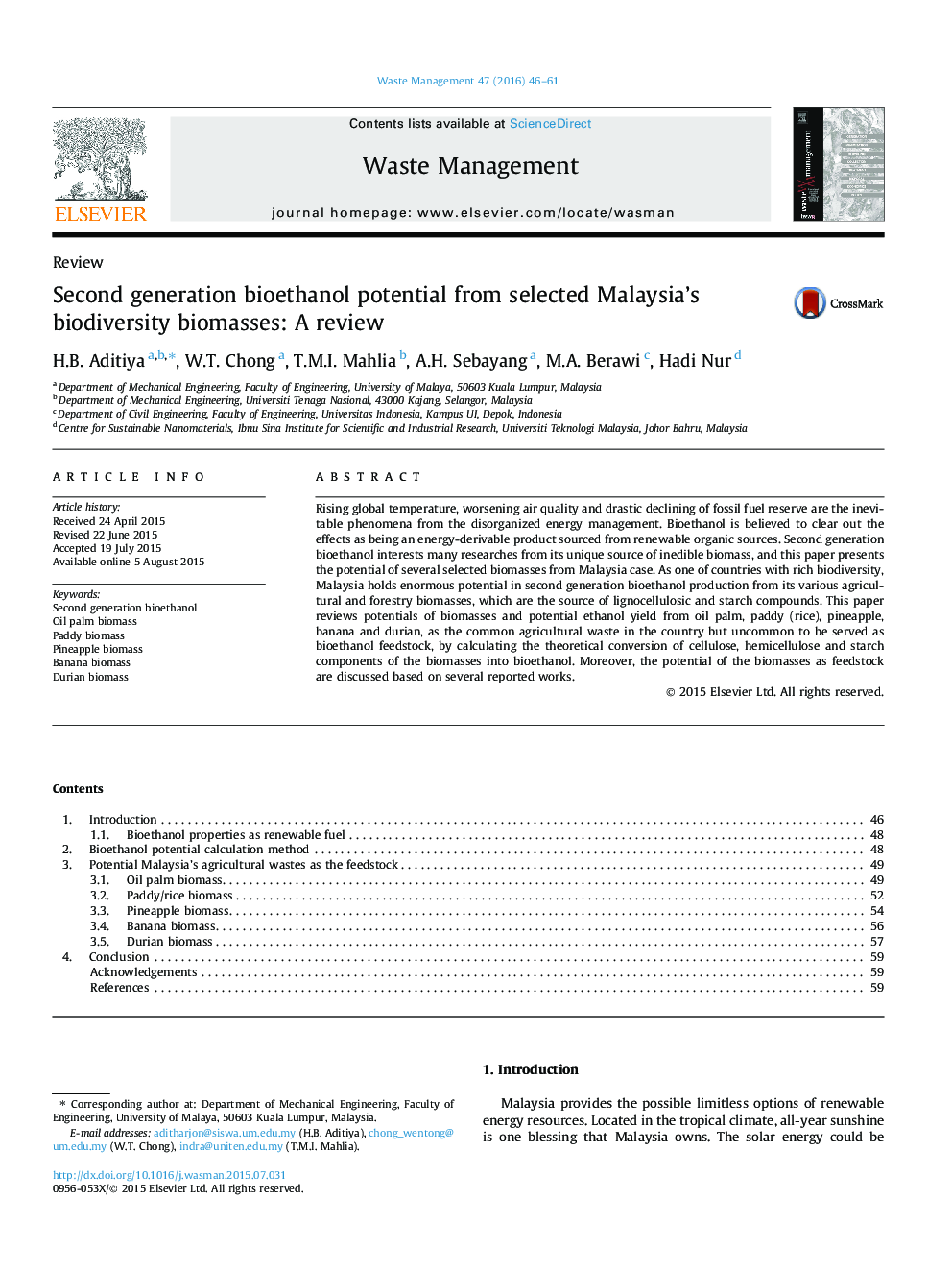| Article ID | Journal | Published Year | Pages | File Type |
|---|---|---|---|---|
| 4471328 | Waste Management | 2016 | 16 Pages |
•We examine bioethanol production potential of Malaysia’s most agricultural wastes.•Malaysia’s oil palm biomass potentially yields bioethanol more than 9 million tonnes.•Malaysia’s paddy biomass provides potential of averagely 600 kt bioethanol annually.•Pineapple biomass potentially yields 40 kt bioethanol, banana biomass 115 kt yearly.•Durian seed potentially yields bioethanol 13 million litres, and 35 kt from durian rind.
Rising global temperature, worsening air quality and drastic declining of fossil fuel reserve are the inevitable phenomena from the disorganized energy management. Bioethanol is believed to clear out the effects as being an energy-derivable product sourced from renewable organic sources. Second generation bioethanol interests many researches from its unique source of inedible biomass, and this paper presents the potential of several selected biomasses from Malaysia case. As one of countries with rich biodiversity, Malaysia holds enormous potential in second generation bioethanol production from its various agricultural and forestry biomasses, which are the source of lignocellulosic and starch compounds. This paper reviews potentials of biomasses and potential ethanol yield from oil palm, paddy (rice), pineapple, banana and durian, as the common agricultural waste in the country but uncommon to be served as bioethanol feedstock, by calculating the theoretical conversion of cellulose, hemicellulose and starch components of the biomasses into bioethanol. Moreover, the potential of the biomasses as feedstock are discussed based on several reported works.
